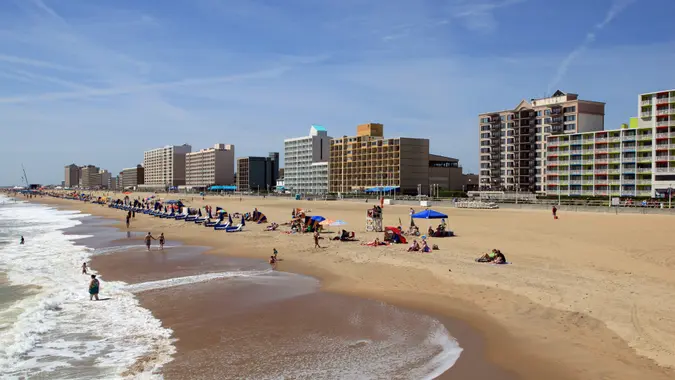Your Safe Harbor IRA Could Be Depleting Your Retirement Savings With High Fees

Commitment to Our Readers
GOBankingRates' editorial team is committed to bringing you unbiased reviews and information. We use data-driven methodologies to evaluate financial products and services - our reviews and ratings are not influenced by advertisers. You can read more about our editorial guidelines and our products and services review methodology.

20 Years
Helping You Live Richer

Reviewed
by Experts

Trusted by
Millions of Readers
Changing jobs multiple times during your career has become the norm, and many employees forget about their 401(k) plans when they do. According to the U.S. Department of Labor, there are currently 30 million former participant accounts in the 401(k) system.
While some former employers may keep these accounts untouched, others will “force out” accounts with balances under $7,000 into a Safe Harbor IRA without the former employee’s consent. These accounts tend to be poorer performing compared to typical retirement accounts and have higher fees.
Here’s what you need to know about Safe Harbor IRAs and what to do if your money is currently in one.
You Might Be Enrolled in a Safe Harbor IRA Without Even Knowing It
Because employers can roll over an inactive 401(k) into a Safe Harbor IRA without a former employee’s consent, it’s possible your money is in one of these accounts right now.
“There is a responsibility to notify the consumer that this is happening, and often that will be through a letter that is sent. However, as we know, many people can get busy with life and perhaps move house, and therefore you may not even realize that you have been forced out into one of these Safe Harbor IRAs,” said Romi Savova, chief executive officer of PensionBee, an online retirement provider.
Even if you do receive a notification letter, you might not be aware of what it’s actually saying.
“You are informed about it, but that level of information-giving is imperfect, and so a lot of people can be quite surprised that they have one of these accounts,” Savova said.
Safe Harbor IRAs Often Charge Predatory Fees That Can Drain Your Retirement Savings
Safe Harbor IRAs may charge high enrollment fees and annual fees and offer lower-than-average annual returns. These factors can deplete your retirement savings over time. A PensionBee study found that if you had $1,000 in a Safe Harbor IRA that charged a $75 annual fee and provided a 2% annual return, your account balance would be $0 after 20 years.
“A traditional 401(k) or traditional IRA will have percent-based fees as a proportion of the account, but in the Safe Harbor IRA account, the fee structures can be quite different,” Savova said. “Many of them will have a percent-based fee, but in addition to that, they have dollar-based fees that come out monthly.”
Although paying a couple of dollars a month might seem like no big deal, these fees can really add up if you have a low account balance to begin with.
“When you apply those dollar fees to small accounts, they essentially end up eroding the balance because the investments have to work so much harder to counteract those dollar-based fees,” Savova said. “The investments within these accounts had very low returns — sometimes zero, sometimes half a percent. And the combination of very low returns combined with fixed fees means that over time, the account can make its way down to zero.”
What To Do If Your Funds Are Being Held in a Safe Harbor IRA
If you’ve left a job and did nothing with your 401(k), it’s important to follow up to see where those funds are currently being held. While it’s always a good idea to roll over an inactive 401(k), it’s particularly essential if your money is currently being kept in a Safe Harbor IRA.
“Move your account either to a traditional IRA or into your new 401(k), if your employer allows you to do that,” Savova said.
 Written by
Written by  Edited by
Edited by 

























